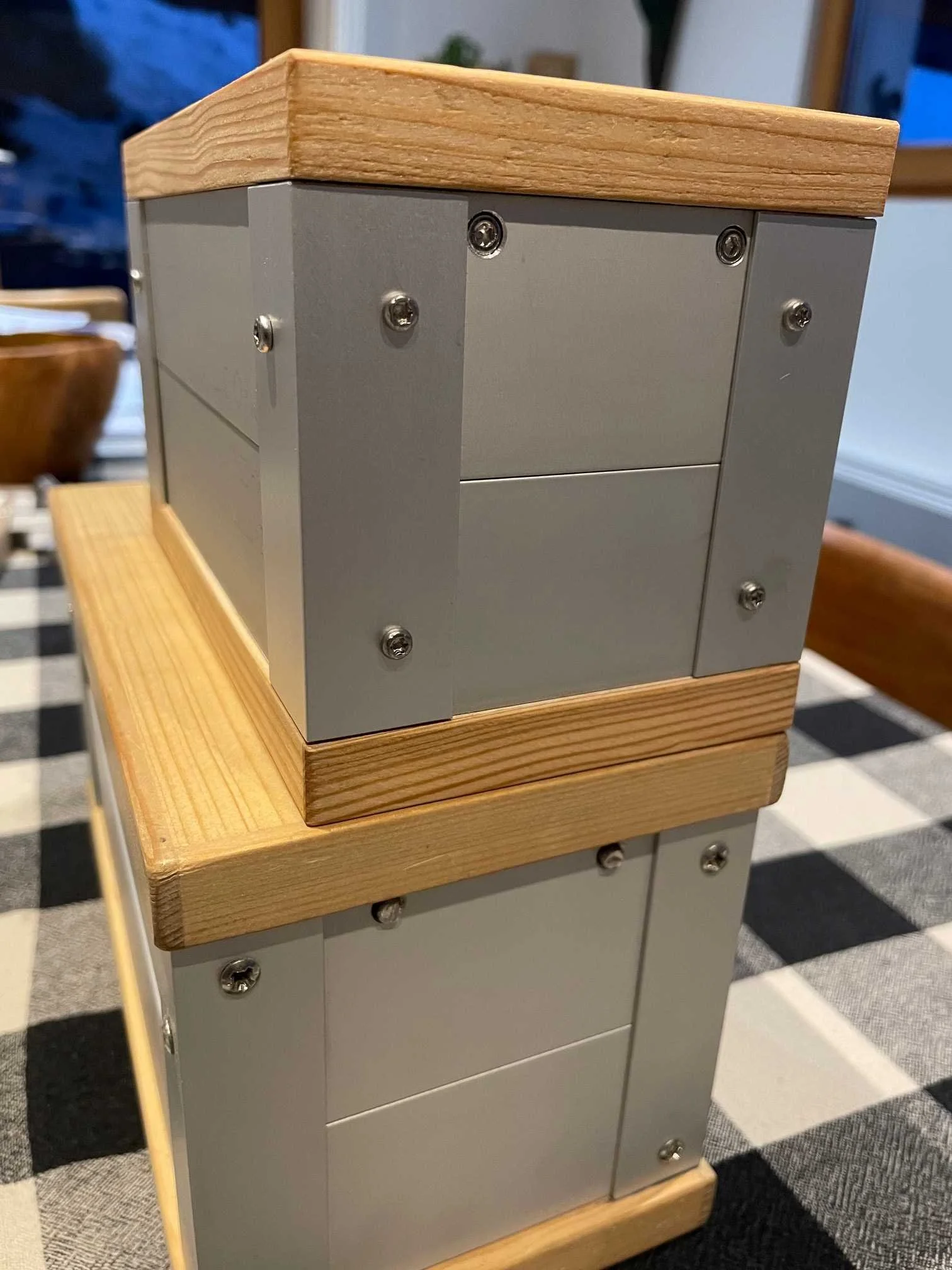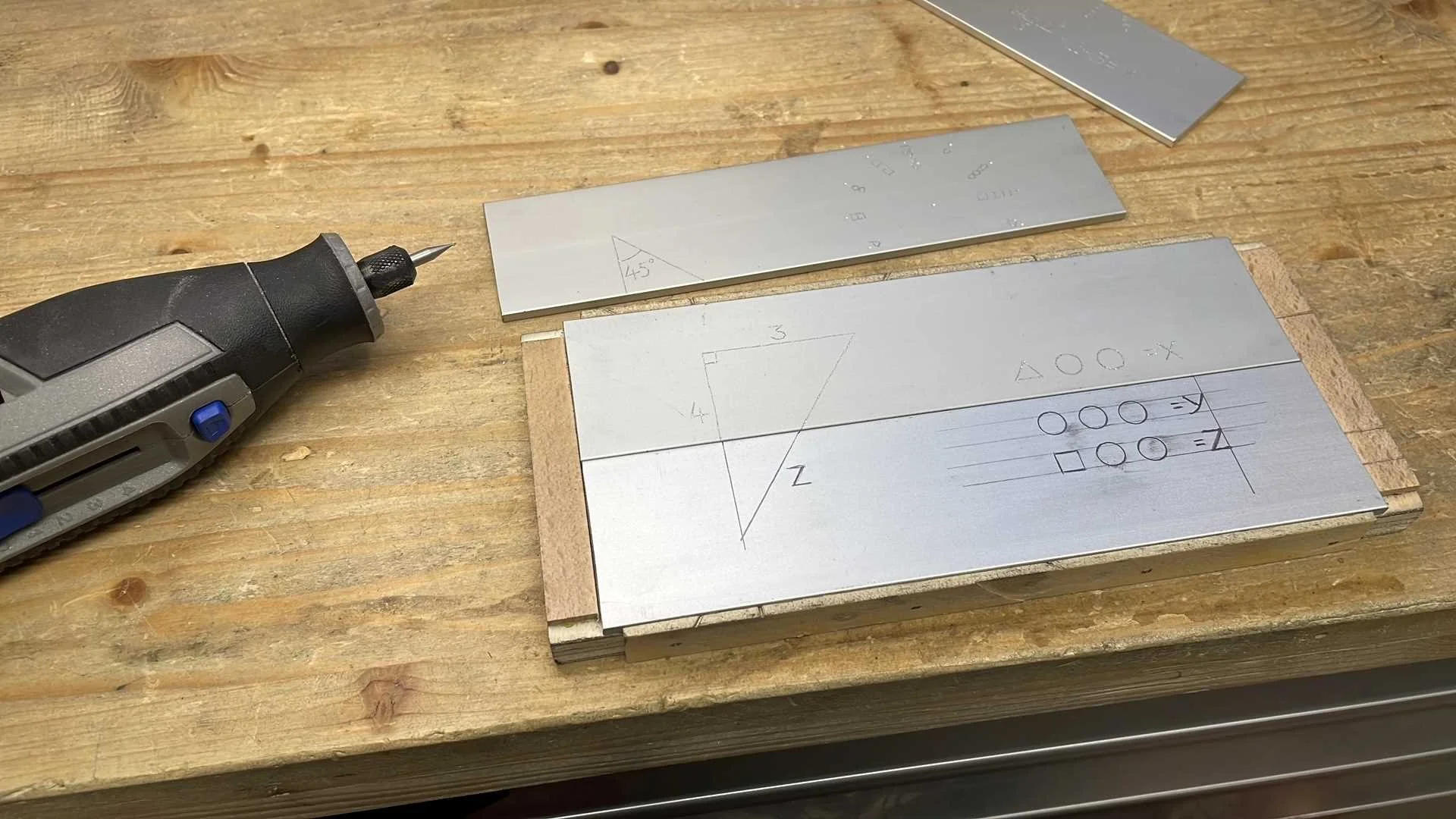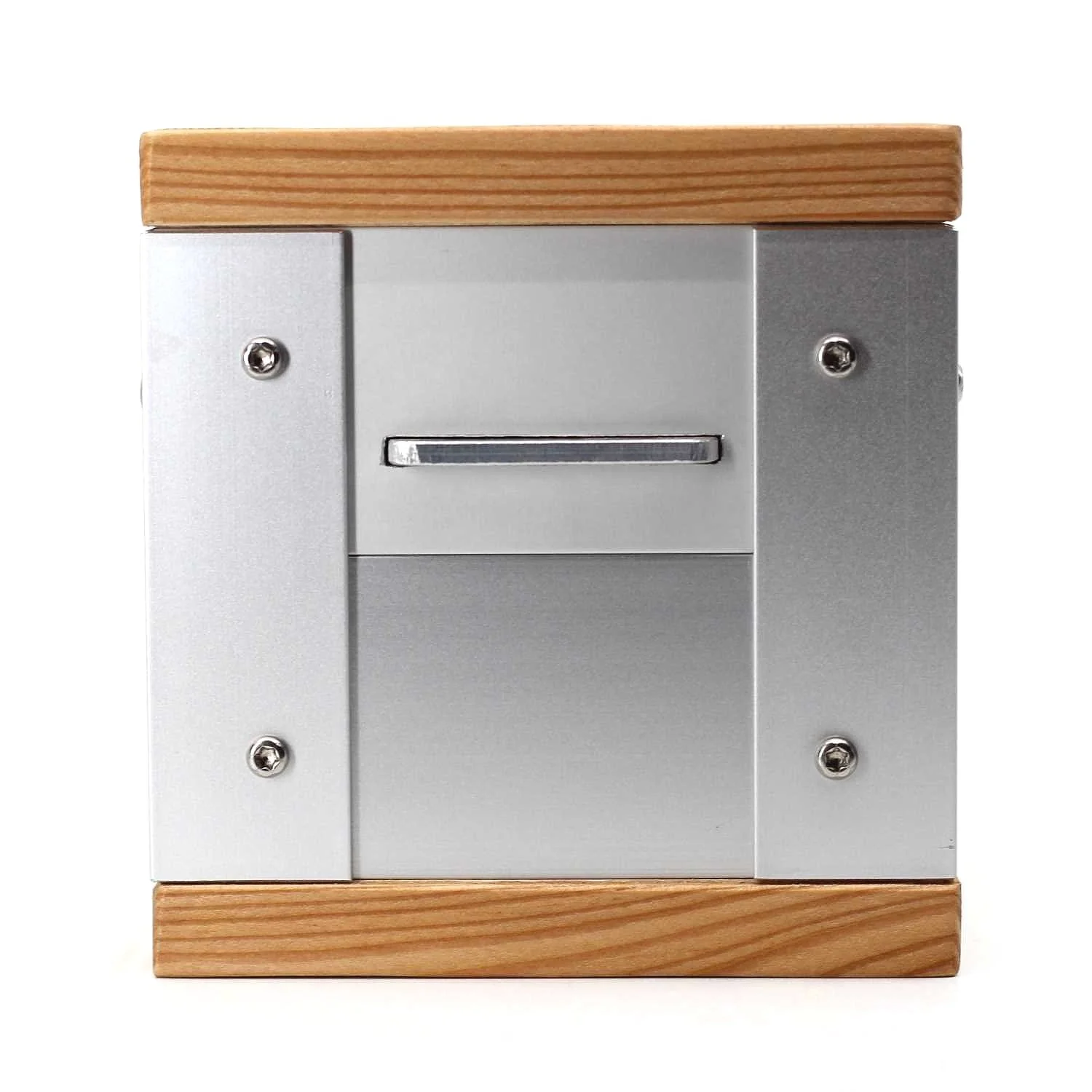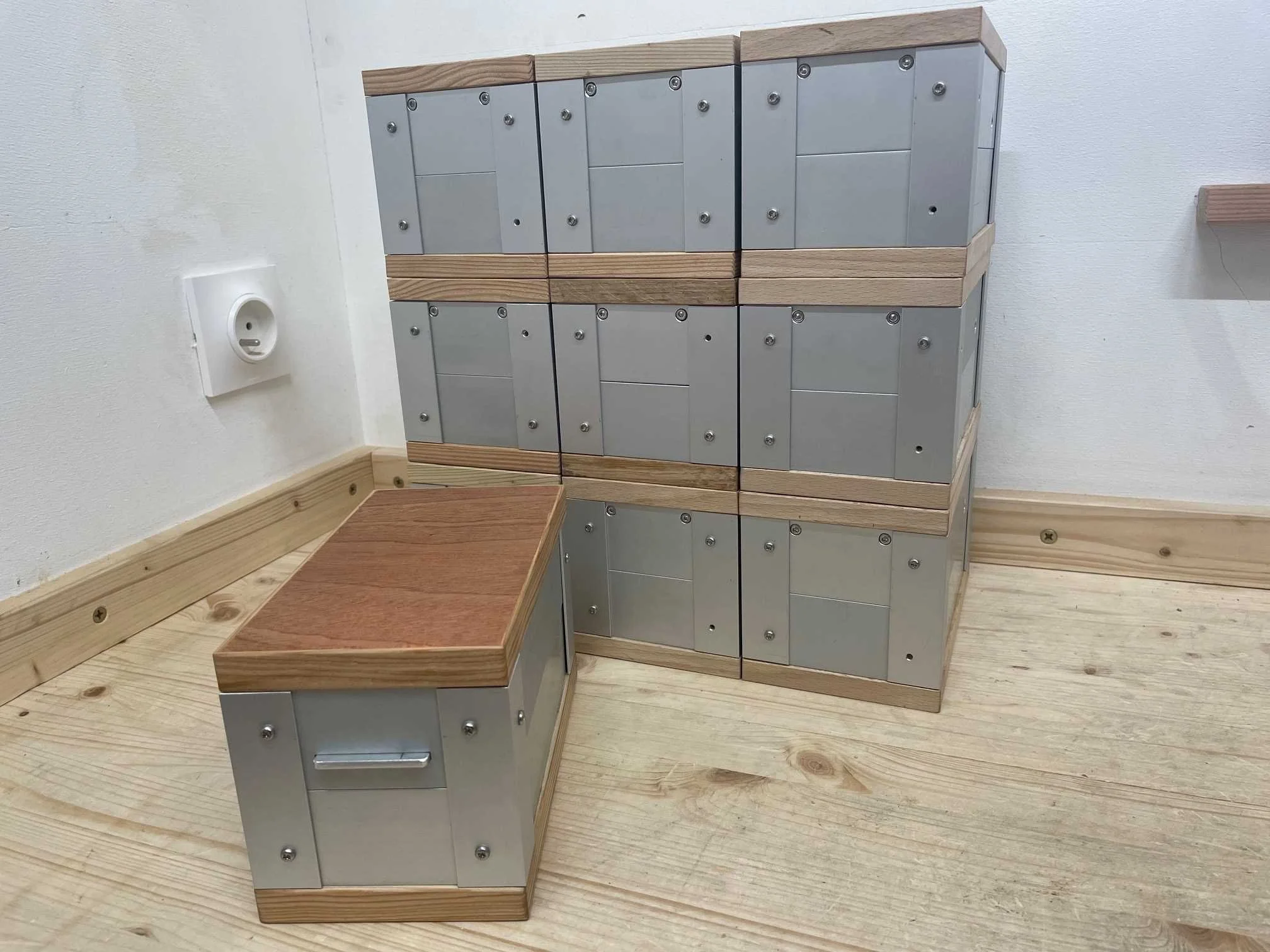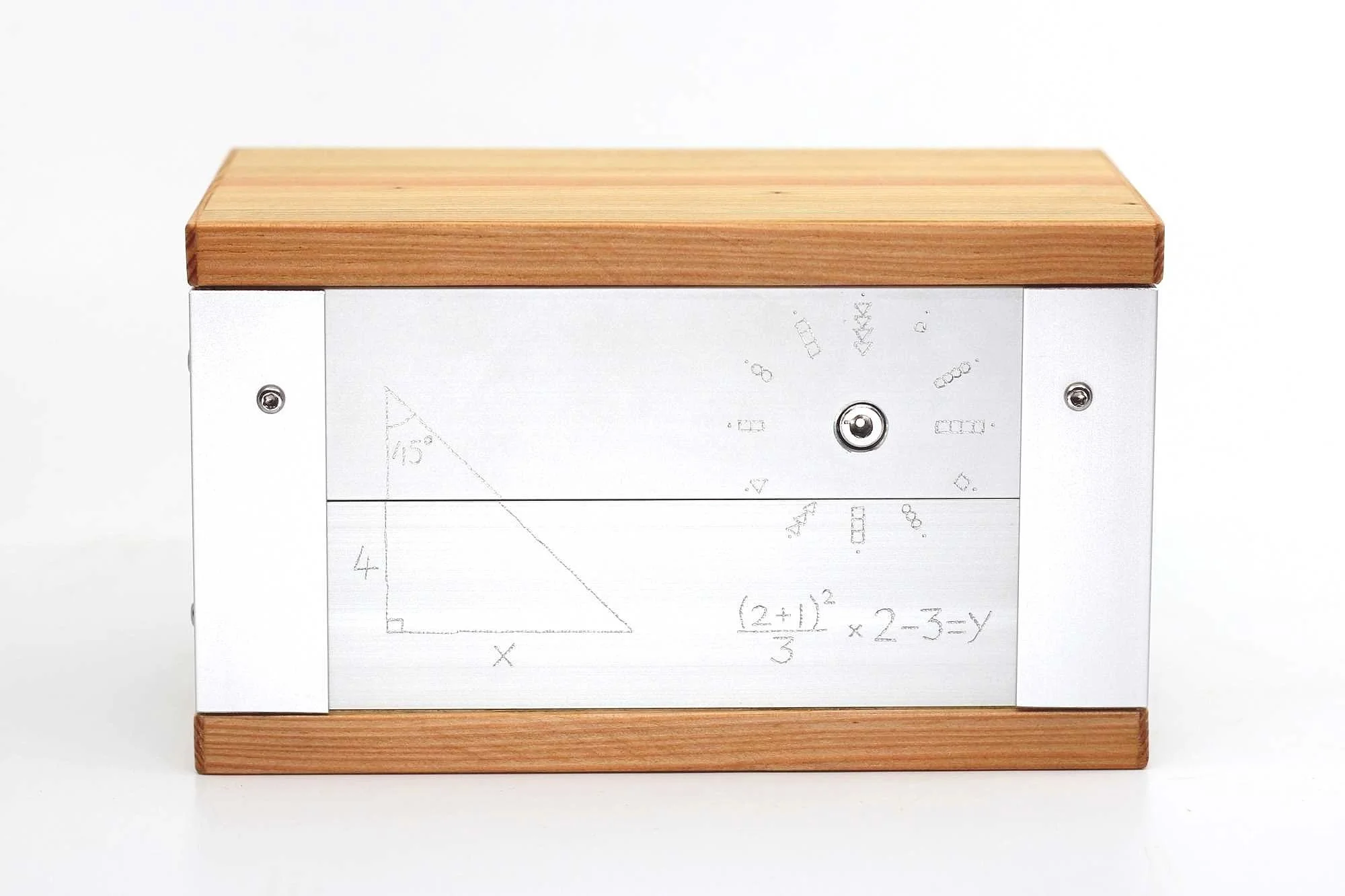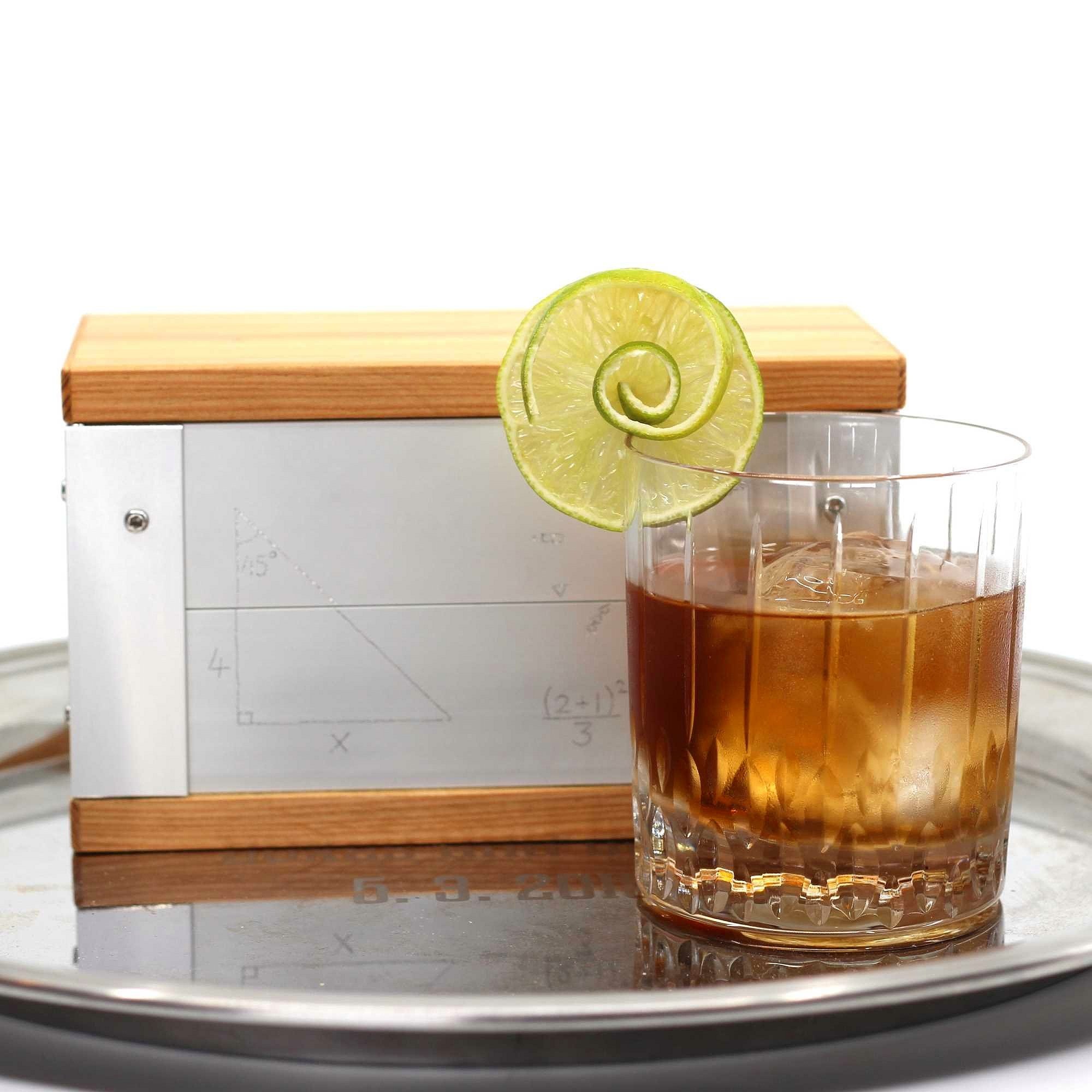Does Not Compute
Maths Box
Maths Box by Doog Menzies
We are returning to the French Alps to brush up on some basic arithmetic this week, where our host Doug “Doog” Menzies has written a puzzling equation to ponder. Doog, who originally hails from New Zealand, where he first learned his woodworking skills, crafts small runs of his solid and handsome mixed materials puzzle boxes in a tiny workshop in the snowy mountains. The “Maths” Box, from an initial edition of ten he made in 2022, was his response to creating a “safe” mechanism. I did the math(s), and it calculates out to be an extremely elusive proof.
From Doog: “The original Maths Box was my fourth puzzle box. Built with minimal hand tools onboard a yacht in Spain, it was no secret that I wanted to make a standard safe mechanism. My previous three boxes had been a hit with my friends, but they had solved them easily so this one needed to be more challenging. I had just done two escape rooms and wanted to add some non mechanical aspects to the project. Naming the box was never going to be difficult. My friends immediately referred to it as The Maths Box. (and yes, there is an “s” in maths.)
courtesy of Doog Menzies
I felt the original was too big so the 50mm aluminium panels were downsized to 40mm, with everything else scaled accordingly. The maths is not difficult, but it did take a long time for me to settle on the equations and panel layout for the original. I revisited the maths before making the 10 copies, changing only one tiny thing that makes no difference to the solve.
courtesy of Doog Menzies
I was hand engraving each panel and had done 8 out of 10 when a friend noticed a mistake! Bugger! I could reuse some of the panels for internal parts, so it wasn’t a waste of materials, but it took many more hours to do the engraving again. The puzzle is very complicated to make. This is partly to do with me reproducing something that was designed as a one-off. There are more than 150 components. The big learning from going through this process is that I needed to design puzzles that I could make more efficiently. RHB 2.0 was my next project and I did pretty well with honouring the original, but modifying it for my manufacturing abilities.
My journey through the crazy world of puzzling continues to be great. I remain impressed with the maturity of the community. My boxes are being received well and I’m still thinking about and sketching new designs. My collaboration with Radek ( https://eshop.rademic.cz/ ) has been consolidated with the expansion of the Demonticon range. We are working on several projects together and are both excited to see where things will go.”
Courtesy of Doog Menzies
Due to the very limited nature of Doog’s manufacturing process, workshop ability and desire, many will not have the chance to experience one of his enjoyable boxes. However, he does make more copies of some (for example with the Red Herring Box 2.0) and will likely continue making small runs of popular designs. His take apart puzzle designs are also accessible through his collaboration with Radek Micopulos and it is worth reaching out to him via the “Demonticon” website.
The Maths Box is a strikingly unusual object, with a Larch wood and Aluminum exterior sporting rivets and etched symbols and equations which might give you flashbacks to grade school. Doog mentions that “The solve is very logical. Pay attention and you will know, without a doubt, what to do. You should not just aim to open the box, but to open it on your first attempt.” Easy for him to say. There may be clues all over the box, but nothing at all moves and his intentions to befuddle are clearly quite … calculated. One of these days I’m going to actually open this box, and when I do, I’ll put my Fields Medal inside.
Second Moon by Paul MacDonald
Doing all this math has made me thirsty. Whenever I’m in need of a mathematically correct (much more reliable than a politically correct) cocktail, I reach for a recipe from Philadelphia bartender Paul MacDonald, inventor of the Fibonacci cocktail concept. Paul heads the bar at Philly’s Friday Saturday Sunday, an award winning, tasting menu only restaurant on Rittenhouse Square, where he crafts incredible libations to compliment the beautiful food.
shoot the moon
There are many well established cocktail “formulas”, even dating back to the original recipe for Barbados punch “one of sour, two of sweet, three of strong, four of weak.” Or the more basic classic cocktail formula of 2:1:1 for spirit, modifier, and sweetener. I like the really simple calculations of an equal parts Last Word or Negroni. MacDonald upped the ante with a playful idea that he executed brilliantly. He relates that he was actually trying to create a cocktail using five different fortified wines (like sherry) in which each flavor could be discerned in sequence. His experiments eventually led to the Fibonacci in Autumn, a delicious drink that uses five spirits in amount ratios that correlate with the first five numbers of the Fibonacci sequence (1:1:2:3:5). He has gone on to create a handful of amazing “Fibonacci” cocktails since then, and recently shared the recipe for another great fall weather option with me, the Second Moon. It features Becherovka, a Czech spirit full of the flavors of autumn, and is much better than my own attempts at creating cocktails with this spirit! I also did the math(s) for this drink, and it adds up to incredible. Cheers!
a pair of prime numbers
Second Moon by Paul MacDonald
1 ¼ oz Becherovka
¾ oz Amontillado sherry
½ oz Giffard Rhubarb liqueur
¼ oz Bols Genever
¼ oz Bonal
Stir ingredients with ice and strain into a favorite glass over a large cube. No garnish required.
explore more:



